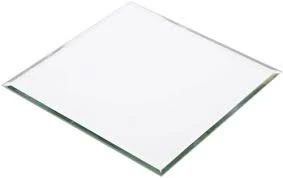

The Silver Mirror Material A Reflection of Art and Technology
The silver mirror, a fascinating interplay of art and technology, has a rich history that traces back centuries. Traditionally, silver mirrors were valued not only for their functionality but also for their artistic significance. This article explores the origins, production methods, and modern-day applications of silver mirror materials, highlighting how they reflect both light and cultural evolution.
Historical Background
The inception of the silver mirror can be traced back to ancient civilizations. Early forms of mirrors were made from polished stone, metal, and glass. However, it was during the Renaissance that the silver mirror began to gain prominence. Artisans in Venice crafted glass mirrors coated with a thin layer of silver, creating a reflective surface that was both effective and aesthetically pleasing. These mirrors quickly became symbols of wealth and sophistication, adorning the halls of the elite.
The silvering process, wherein a thin layer of silver is applied to glass, revolutionized mirror production. It allowed for a higher quality of reflection and durability compared to earlier methods. The technique involved applying a copper or silver nitrate solution to glass, which formed a layer of metallic silver upon exposure to heat. This not only made mirrors more accessible but also allowed for elaborate designs and frames, further enhancing their status as decorative art pieces.
Production Techniques
Modern silver mirror production combines traditional techniques with contemporary technology. The process begins with high-quality glass being coated with a reflective layer of silver. This is usually done using the chemical process known as “silvering,” where a silver solution is applied to the glass surface.
After the initial silver layer is bonded, a protective layer is often added to prevent tarnishing. The addition of coatings, such as lacquer or plastic, further enhances durability while maintaining optical clarity. Advances in technology have also led to the development of less toxic methods of creating silver mirrors, providing safer alternatives for both manufacturers and consumers.

Applications of Silver Mirrors
Today, silver mirror materials serve a range of purposes beyond mere reflection. In the realms of design and architecture, they are prized for their ability to enhance light and space. Silver mirrors are commonly used in interior design, creating an illusion of depth and contributing to aesthetic appeal. They can brighten spaces, making them feel larger and more inviting.
In the technological sphere, silver mirrors are crucial in various optical applications. They are employed in telescopes, lasers, and optical devices to reflect light with minimal distortion. The precision and quality of a silver mirror can significantly impact the performance of these instruments, making it essential in fields ranging from astronomy to telecommunications.
Cultural Significance
Beyond their physical applications, silver mirrors carry deep symbolic meanings across cultures. They often represent self-reflection, truth, and clarity of vision. In literature and art, mirrors have been used as metaphors for introspection and the confrontation of one’s identity. The polished surface of a silver mirror invites viewers not only to see their own reflection but also to ponder the deeper truths of existence.
The allure of silver mirrors also extends to the realm of popular culture. They often appear in films and literature, serving as portals to other worlds or as instruments of revelation. The dual capacity of mirrors to reflect and obscure reality lends them a unique narrative power, underscoring their importance as cultural artifacts.
Conclusion
In conclusion, silver mirror materials encapsulate both the artistry and innovation that define human creativity. From their historical origins to their modern applications, these mirrors reflect not just physical images but also the evolving relationship between technology and culture. As we continue to explore and innovate, the silver mirror remains a timeless symbol of clarity, reflection, and the pursuit of beauty. Whether enhancing our living spaces, aiding scientific endeavors, or serving as a canvas for self-exploration, silver mirrors will undoubtedly maintain their significance for generations to come.